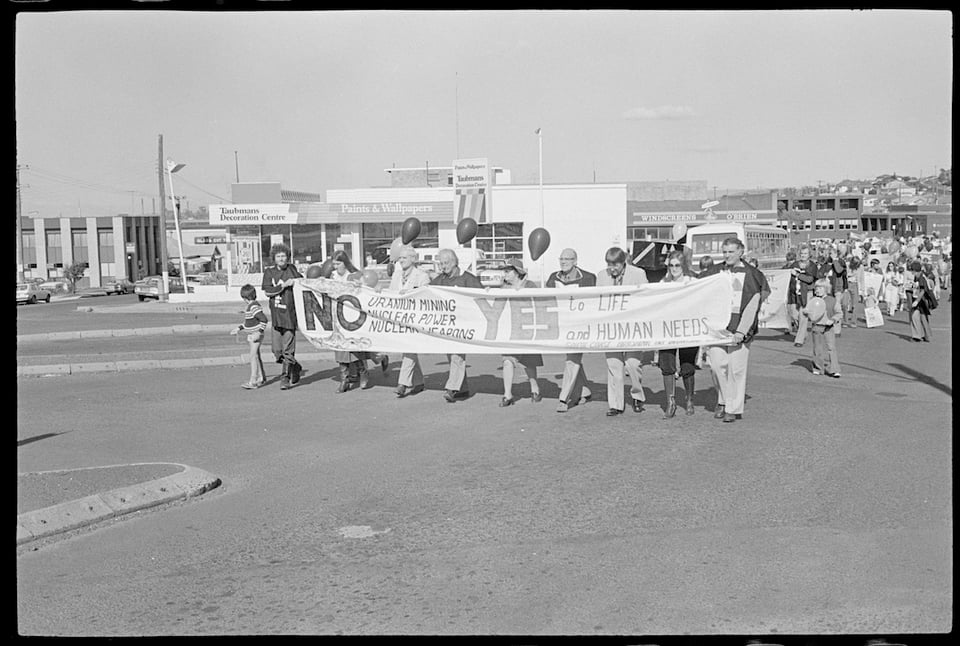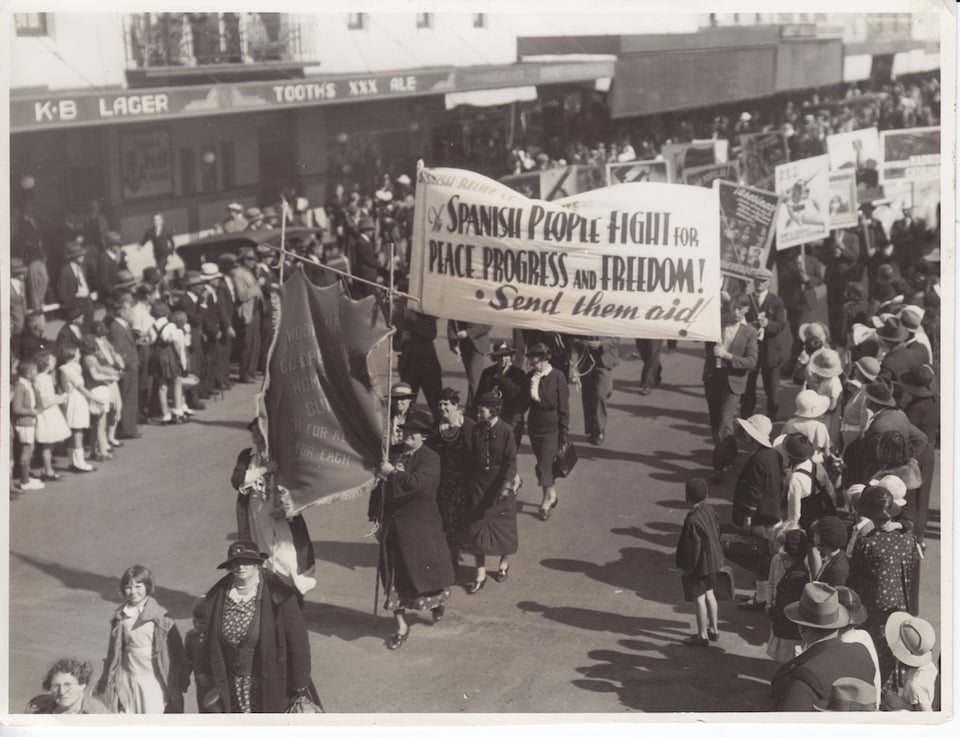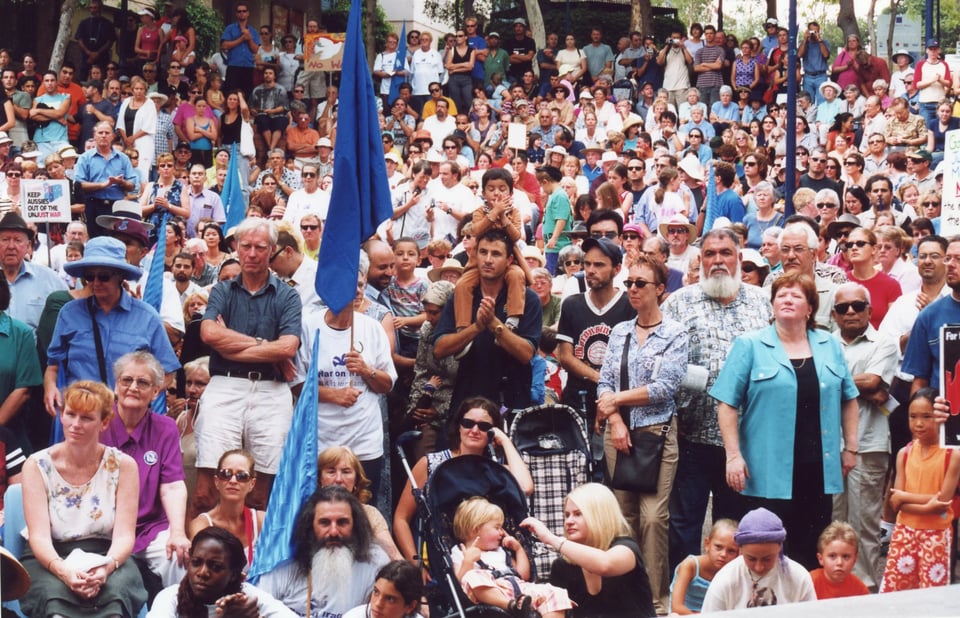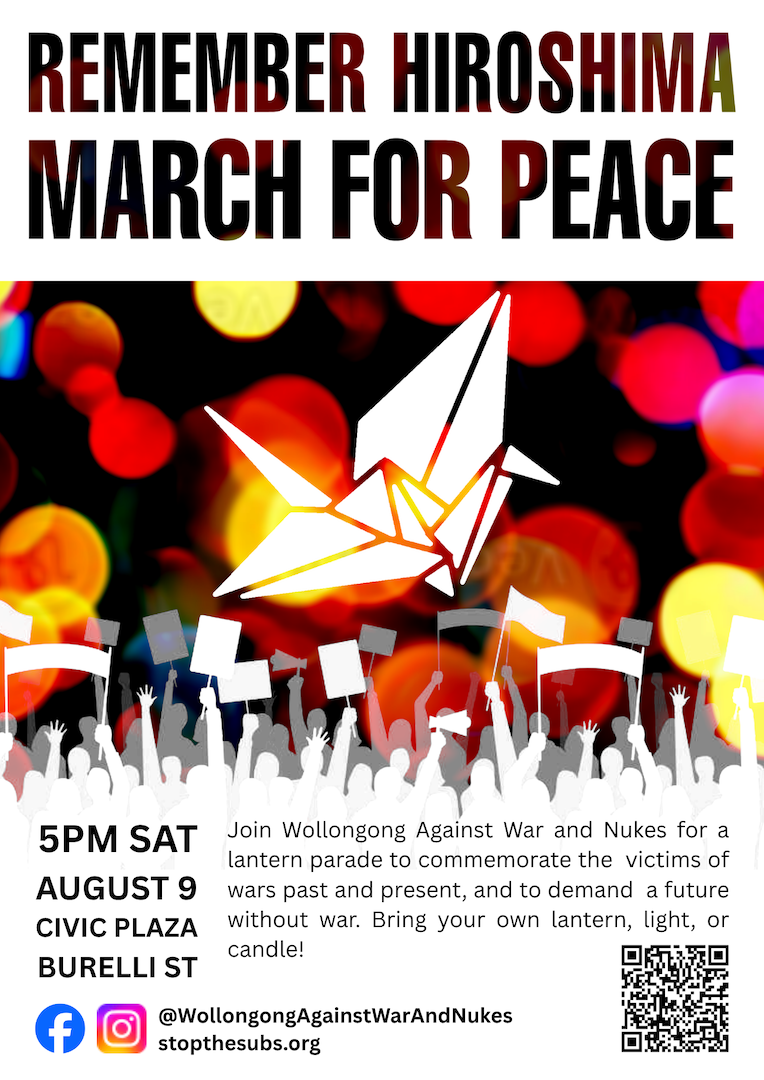Peace Movement Illawarra

This year marks 80 years since the United States Army Airforce Plane Enola Gay flew over the densely populated city of Hiroshima and dropped the first atomic weapon to be used in wartime, the gun-type uranium-235 fission bomb ‘Little Boy’. Three days later, a second bomb, the larger and more powerful implosion-type plutonium bomb 'Fat Man' was dropped over Nagasaki. Together the atomic bombs killed between 150,000 and 246,000 people and devastated the two cities. Shortly afterwards, Imperial Japan surrendered unconditionally to the Allied Powers.
Those who seek to justify the American bombing of Hiroshima and Nagasaki claim that it ended the war with Japan and prevented the need for a full-scale invasion of the Japanese mainland, thereby saving even greater loss of life. But Japan was already on the brink of surrender in August 1945. And while Australia's white supremacist historical imaginary tends to attribute victory over the erstwhile 'Yellow Peril' to patriotic American and Australian manhood, it was widespread popular resistance to Japanese colonialism in mainland China that really brought the might of the Japanese military to its knees. By the time the bomb was dropped, Japan's population, which had largely supported Japanese aggression on the Asian continent, was exhausted, and war weary. Absenteeism in the factories supplying the Imperial war machine was growing and when the Allies occupied mainland Japan after the surrender, they were mostly welcomed as liberators by the Japanese people, who embraced the promise of democracy and an end to militarism.
The American bombing of Hiroshima and Nagasaki did not bring about the end of the Asia-Pacific War but it was the opening salvo in a new Cold War. After 1945 the United States would pit itself against world communism and states like the Soviet Union that claimed to represent that movement. The Cold War shaped the rest of the twentieth century. The atomic bombing of Hiroshima and Nagasaki provoked a nuclear arms race, in which states on both sides of its ideologically-defined frontier developed and tested ever more powerful weapons of mass destruction. The Soviet Union conducted its first successful nuclear weapons test in Kazakhstan in 1949; the British theirs in the Montebello Islands off Western Australia in 1952. These tests were closely followed by the testing of newer, even more destructive hydrogen bombs by the US in 1952 and 1954. Not to be left behind in the race towards nuclear Armageddon, France joined the nuclear club in 1960 and China in 1964. The military strategy that emerged was dubbed by its theoreticians with a moniker that indicated their self-consciousness of its insanity: Mutually Assured Destruction (MAD).
Here in Wollongong, miners, steelworkers, and other local people had been fighting against militarism, imperialism, and nuclear madness since the early twentieth century. Wollongong's first industrial workforce, the miners who worked the rich coal seams of the escarpment, were influenced by the internationalism of the International Workers of the World (IWW). When Labor Prime Minister Billy Hughes put forward a referendum on conscription to supply bodies for the killing fields of Europe, the miners’ lodges passed motions condemning the move. They fought a vigorous campaign against conscription, resulting in a resounding 65 per cent NO vote in Wollongong.
When the war was over, and the battle between socialism and barbarism intensified in the 1930s, Wollongong recognised the growing threat posed by organised fascism. Australia's wannabe Führers formed the New Guard to attack and harass meetings of workers and the left. Its followers in Wollongong included prominent citizens like Wollongong Mayor William Louis Howarth (1864–1940), derided at the time as the 'Mussolini of the South Coast.’ The Workers Defence Corp and the United Front Against Fascism formed to oppose them, fought a decisive battle with the New Guard in Crown Street. This was followed by a boycott of New Guard members’ businesses, which prompted their rapid decline locally.

Not content to fight fascism in Crown Street, Port Kembla steelworkers Jim McNeill and Joe Carter answered the call of the International Brigades for volunteers to fight for the elected Republican Government of Spain against a fascist coup led by military officers, large landowners, and Catholic reaction. They took with them the full support of the local labour movement, which was busy raising funds for Spanish relief and the Republican cause. When they returned from Europe in 1938, they were welcomed as heroes in a city where local waterside workers had struck that year, refusing to load the tramp steamer Dalfram with pig iron bound for Kobe, Japan, where they knew it would fuel the Japanese war machine in China. The Lyons Government and its Attorney-General, the infamous Pig Iron Bob Menzies, favoured appeasement of Japan. Port Kembla wharfies and the local labour movement, however, saw more clearly that the war materiel steel giant BHP (now Bluescope) was selling at a profit to Japan to kill and maim in Nanking and other Chinese cities, would return to Australia before long as bombs and bullets.
With the dawning of the Cold War, the peace movement in Wollongong regrouped around opposition to nuclear weapons. In March 1950 the international Partisans for Peace launched the Stockholm Appeal, a signature campaign calling for a ban on nuclear weapons. Wollongong supporters promoted the appeal and opposition to nuclear weapons became a key theme in May Day marches in the 1950s. When the Cold War turned hot in Vietnam in the 1960s, local young people like Louie Christofides took direct action. In April 1969 Louis sat on the railway line at Wollongong Railway Station in front of a train carrying conscripts to Sydney for the war in Vietnam. When he was later jailed for refusing the draft Wollongong women, including Louie's mother Helen and peace activist Sally Bowen, chained themselves to the railings of the public gallery in Federal Parliament, seeking justice for Louie and voicing their opposition to the war.
Following Australia's withdrawal from Vietnam between 1971 and 1973, the anti-war energies that had been aroused in the movement found expression in the movement for nuclear disarmament. In the 1980s the threat of atomic weapons loomed large, as sabre rattling between the United States and the Soviet Union threatened to break out into nuclear war. Annual Hiroshima Day marches held throughout these decades brought the peace movement together, culminating in 1986 with the United Nations International Year of Peace. In that year Wollongong City Council convened the International Year of Peace Committee that organised a civic commemoration of Hiroshima Day and installed a bronze plaque that remains to this day at the corner of Crown and Church Streets in the Wollongong City Mall.
My own life became entwined with the story of the Wollongong peace movement in 2001, following the 9/11 terrorist attacks carried out against the US by Islamist group al-Queada, an organisation that was itself a product of American covert operations during the Cold War. The neoconservative Bush administration used the attacks as an excuse to launch a new global War of Terror, with the full support of its Australian lap dog, Liberal Prime Minister John Howard. Wollongong's peace movement mobilised rapidly to express our opposition to this new global war, protesting the attacks on Afghanistan and forming a new anti-war organisation, Network Opposing War and Repression (NO WAR). In February 2003 we organised the largest peace demonstration in Wollongong history, bringing 5,000 people into the streets.

In 2022 Wollongong peace activists mobilised once more under the banner of Wollongong Against War and Nukes. This time we were protesting the AUKUS military pact between Australia, the United Kingdom, and the United States and the threat of an east coast nuclear submarine base at Port Kembla. AUKUS is built on hollow promises by the US and Britain to supply nuclear-powered submarines to Australia. But its true purpose is not to facilitate Australia’s purchase of a few second-hand radioactive death machines, but to deepen our involvement in America's forever wars. The agreement covers not only technology transfers, but also the stationing of more US troops and US bases in Australia, and greater integration of Australian military assets under US command and control.
When Israel launched its most recent wave of genocidal violence against the Palestinians in October 2023, a new generation of activists deeply informed by de-colonial and anti-racist politics convened Wollongong Friends of Palestine. The group has led a sustained campaign of protests, public meetings, and direct action against Israel's war. Like the wharfies who sought to halt Japanese military aggression by stopping pig iron exports in 1938, local opponents of Israeli aggression have fought the genocide in occupied Palestinian by disrupting operations at local steelmaker Bisalloy Steels. Bisalloy profits by selling armoured steel to Elbit Systems, who use it in armoured vehicles to kill, maim, and oppress the Palestinian people. Beginning with an historic 18 months of uninterrupted weekly protest marches, the movement continues to stand alongside the Palestinians and other victims of increasing Israeli aggression in the Middle East through a range of creative actions, from continuing fortnightly protests, to pickets, public meetings, school strikes, and art and cultural activism.
Wollongong’s proud history of peace activism is currently being celebrated by Wollongong City Library in the Peace Movement Illawarra exhibition. The exhibition features physical displays of photographs and artefacts in the library and an online exhibition on the Illawarra Stories website. Here you can find images commemorating the history of the peace movement and interviews with local peace activists Nick Southall, Gem Romuld, Sharon Callaghan, Margaret Perrott, and me conducted, by the library's oral history volunteers. I will give a talk on history of the local peace movement as part of the exhibition at 5pm Monday 28th July at Wollongong Library (details here). I will also be performing some Japanese kamishibai at the library at 11am on Saturday 2 August. This performance is aimed at children and the young at heart, and will include a story about Hiroshima (details here). There will be a series of workshops making origami peace cranes in various branches of the library (details here).
Wollongong Against War and Nukes will commemorate 80 years since the bombing of Hiroshima and Nagasaki and our continuing determination to end war with a lantern parade commencing Saturday 9 August at Civic Plaza, Burelli St, and marching to Belmore Basin.
I hope you can join us and become part of the history of Peace Movement Illawarra.
